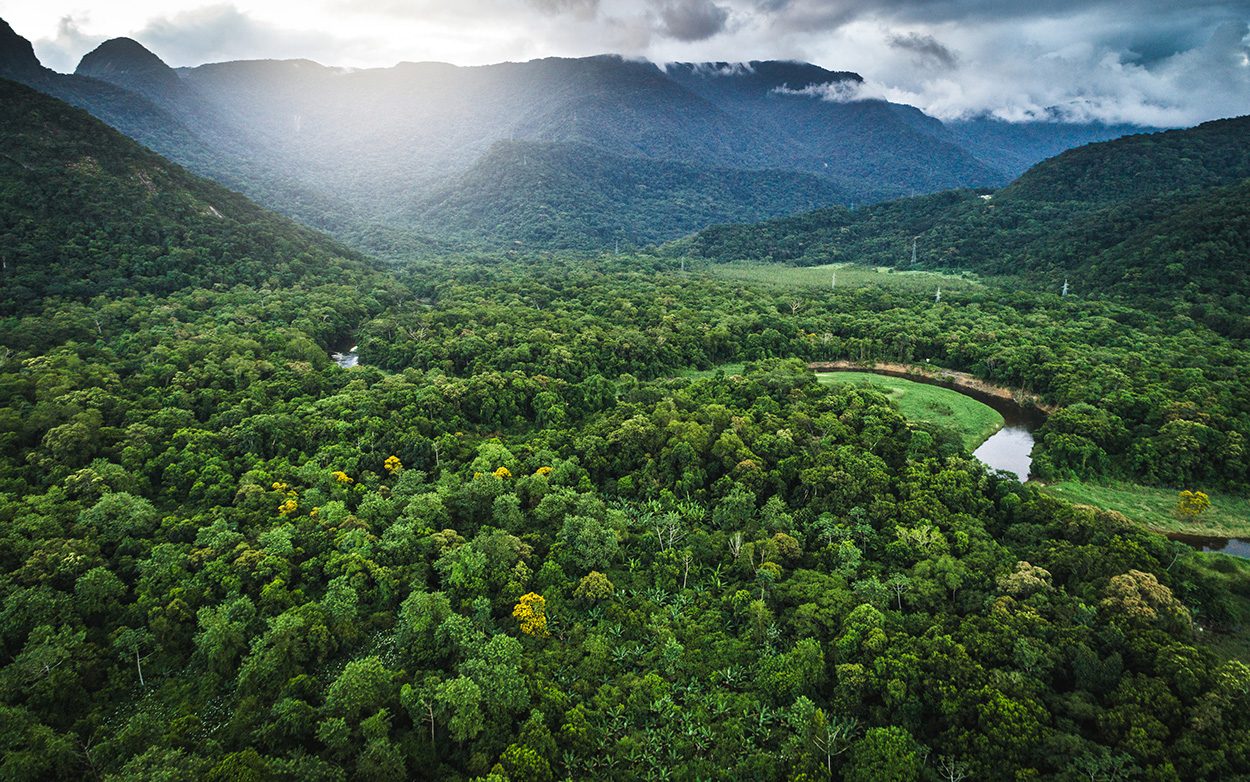Forest conservation and reforestation is an important measure to bind more carbon dioxide from the atmosphere. Researchers have now determined where in the world forests and soils can still absorb the extra carbon dioxide, how much and by what means. Their world map shows that the potential for CO binding has not yet been exhausted, especially in the tropics. In total, global forests and soils could absorb an additional 287 billion tons of carbon. Conservation and targeted care of existing but degraded forests has greater potential than afforestation – also because the latter has a conflict with food production.
Forests and soils are important sinks of greenhouse gases in the climate system – they store carbon in the form of biomass and organic matter and thus remove it from the carbon cycle and above all from the atmosphere. The latest Global Climate Report and several studies have already shown that natural carbon dioxide sinks also play an important role in climate protection. Meanwhile, climate change has progressed so far that reducing carbon dioxide emissions alone will not be enough to achieve the goal of protecting the climate by a maximum of two degrees of warming compared to pre-industrial times. In addition, strategies are needed to remove carbon dioxide from the atmosphere. “CO2 storage in woody biomass, such as forest ecosystems, is generally considered to have particularly high potential, particularly since it also brings a number of environmental, social and economic benefits,” explains Wayne Walker of the Woodwell Climate Research Center in Massachusetts. his colleagues.
There is still untapped storage potential
Researchers have now studied closely how high the unused potential for carbon dioxide storage in forests and soils is. “Terrestrial ecosystems store huge amounts of carbon every year,” Walker explains. “But in order for us to be able to use the untapped potential of these systems for climate protection, we need to know how much storage space is still available, where in the world that space is and what measures we can use to use that potential as quickly as possible.” The team developed a model based on global data sets that show the previous carbon dioxide uptake capacity still available to trees, tree roots and soils around the world. Their world maps illustrate this potential with a resolution of 500 meters and for the present and future with uncontrollable climate change.
The assessment showed that forests and soils around the world already store about 3.4 trillion tons of carbon – that’s about 88 percent of the maximum possible. “This leaves a 12 percent deficit, or 494 billion tonnes of carbon, as a potential for additional carbon dioxide uptake,” Walker and his team wrote. Nearly three-quarters of this untapped potential resides in tree tissues located above and below ground. If one subtracts the amount of land required for agricultural food production and for settlement areas from this maximum potential, there are still 286.7 billion tons of unused storage potential in forests and soils, the researchers report.
Optimal forest management is more effective than afforestation
The natural carbon dioxide storage potential is not evenly distributed on Earth: “Of the three large bioclimatic regions, the tropics and subtropics contain the largest proportion of unused carbon storage at 68 percent,” the scientists wrote. “This is five times greater than the temperate zone and 3.5 times more than the northern and polar regions.” If you look at the distribution of the CO2 sink across individual countries, half of the untapped potential lies in just seven countries: Russia, Brazil, the United States, China, the Republic of the Congo, Indonesia, and Canada. According to the team, the boreal forest regions of Russia alone contain about 15 percent of the global potential. However, if the values are converted to the unused storage capacity of each region, then tropical countries such as the Philippines, Indonesia, Myanmar and Tanzania are ahead.
The study also shows measures that can better and faster bring free storage capacities into additional CO2 intake. Accordingly, the most effective solution is not only afforestation of cleared or sparsely wooded areas, but improvement of management of existing but degraded forests. In the tropics, 70 percent of the untapped potential could be used in this way alone—five times as much by reforestation of new tropical forests, Walker and colleagues identify. In Brazil, for example, more than half of the carbon dioxide storage capacity that is still available there can already be achieved through better forest management, particularly in the Amazon. Protecting forests presents the greatest opportunity to connect and store carbon in a timely manner. Therefore, the urgency of the climate crisis requires that we prioritize such actions,” says co-author Peter Ellis of The Nature Conservancy in Virginia.
According to the research team, their maps and data can now provide very practical help in identifying the cheapest and most effective measures for different regions and countries. “Our results will be valuable to many countries, because such natural solutions contribute significantly to achieving the goals of the Paris climate agreement,” says Ellis Bronson-Griscom Fellow.
Source: Wayne Walker (Woodwell Climate Research Center, Falmouth, MA) et al, Proceedings of the National Academy of Sciences, doi: 10.1073/pnas.21111312119

“Alcohol buff. Troublemaker. Introvert. Student. Social media lover. Web ninja. Bacon fan. Reader.”






More Stories
Ecologists Celebrate New Xesap National Park in Laos | Science
Is the wrong diet making you forget?
We can study it with a new telescope.